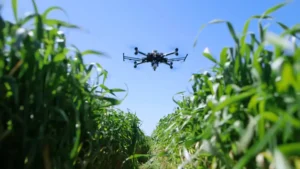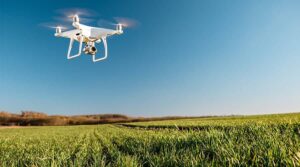Drones, also known as unmanned aerial vehicles (UAVs), are becoming increasingly popular for environmental monitoring. These aerial devices are equipped with cameras, sensors, and other technologies that enable them to collect data and images from a bird’s-eye view of the environment. The use of drones for environmental monitoring offers numerous benefits, ranging from cost savings to increased accuracy and efficiency. In this article, we will discuss some of the key benefits of using drones for environment monitoring.
Benefits of using drones for environmental monitoring
Improved data accuracy and resolution: Drones provide a much more detailed and accurate view of the environment than traditional ground-based monitoring methods. They can capture high-resolution images and collect data in real-time, allowing for faster and more accurate decision-making. This is particularly useful in large-scale monitoring projects, such as monitoring forest cover, land use, or changes in water resources. Additionally, the use of drones can reduce the potential for human error that can occur in manual monitoring.
Cost-effective monitoring: Using drones for environmental monitoring can be more cost-effective than traditional monitoring methods. For example, aerial surveys using manned aircraft are expensive and require a significant investment in equipment, personnel, and fuel costs. In contrast, drones are relatively inexpensive and require fewer personnel to operate. This makes them an attractive option for small-scale projects and for monitoring in remote or difficult-to-access areas.

Improved safety: Drones are also safer than manned aircraft or ground-based monitoring methods. In some cases, monitoring tasks can be hazardous for workers, such as monitoring wildlife populations in areas with dangerous predators or monitoring emissions from power plants. By using drones, these tasks can be carried out with minimal risk to human safety.
Reduced environmental impact: Using drones for environmental monitoring can also reduce the impact of monitoring activities on the environment. Traditional ground-based monitoring methods can cause soil compaction and disturbance to habitats. Aerial monitoring using drones does not require physical contact with the environment, reducing the impact on the ground and the potential for damage.
Flexibility and accessibility: Drones are highly flexible and can be used in a variety of monitoring applications. They can be equipped with different sensors, cameras, and other technologies depending on the specific monitoring requirements. They are also highly accessible, with a wide range of models available for purchase or rent. This makes them an ideal tool for small-scale monitoring projects or for organizations with limited resources.
Real-time monitoring and analysis: Drones can provide real-time monitoring and analysis of environment conditions. This is particularly useful for monitoring natural disasters, such as wildfires, floods, or hurricanes. Real-time monitoring can provide critical information to emergency responders and aid in decision-making during these events.
Improved data sharing and collaboration: Drones can also facilitate improved data sharing and collaboration among organizations and researchers. Data collected by drones can be easily shared with stakeholders and collaborators, allowing for more efficient analysis and decision-making. This can lead to improved coordination and a more comprehensive understanding of environment issues.
Increased public awareness and engagement: The use of drones for environmental monitoring can also increase public awareness and engagement in environment issues. Drones can capture stunning aerial footage and images that can be used to educate the public about environmental issues, such as deforestation or pollution. This can help to raise awareness of environmental issues and promote public engagement in environmental protection.
As with any technology, there are also some limitations and challenges associated with using drones for environmental monitoring. One of the main challenges is the limited battery life of most drones, which can limit their range and flight time. In addition, drones can be affected by weather conditions, such as strong winds or rain, which can limit their usability.

Another challenge is the need for trained personnel to operate the drones and analyze the data collected. This requires specialized skills and knowledge, which may not be readily available in all organizations or communities. Additionally, there are regulatory requirements and safety considerations that need to be taken into account when operating drones, particularly in areas with airspace restrictions or wildlife conservation areas.
Despite these challenges, the benefits of using drones for environmental monitoring are significant, and the technology is rapidly advancing. In recent years, drones have become more affordable, reliable, and accessible, making them an increasingly popular tool for environmental monitoring.
Examples of the use of drones for environmental monitoring include monitoring wildlife populations, mapping deforestation, monitoring water quality, and tracking the effects of climate change. Drones have also been used to monitor the spread of invasive species, identify areas of erosion, and assess the impact of human activities on sensitive ecosystems.
In addition to environment monitoring, drones are also being used for a range of other applications, including search and rescue, infrastructure inspection, and delivery of medical supplies. As the technology continues to advance, it is likely that drones will play an increasingly important role in environmental management and protection.
In conclusion, the use of drones for environmental monitoring offers numerous benefits and has the potential to revolutionize the way we collect and analyze environmental data. Drones provide a cost-effective, flexible, and efficient means of monitoring environmental conditions, and can help to improve decision-making, reduce risks to human safety, and promote public engagement in environmental protection. As the technology continues to evolve, we can expect to see even greater applications of drones in environmental monitoring, and an increasing role for this technology in environmental management and conservation.











